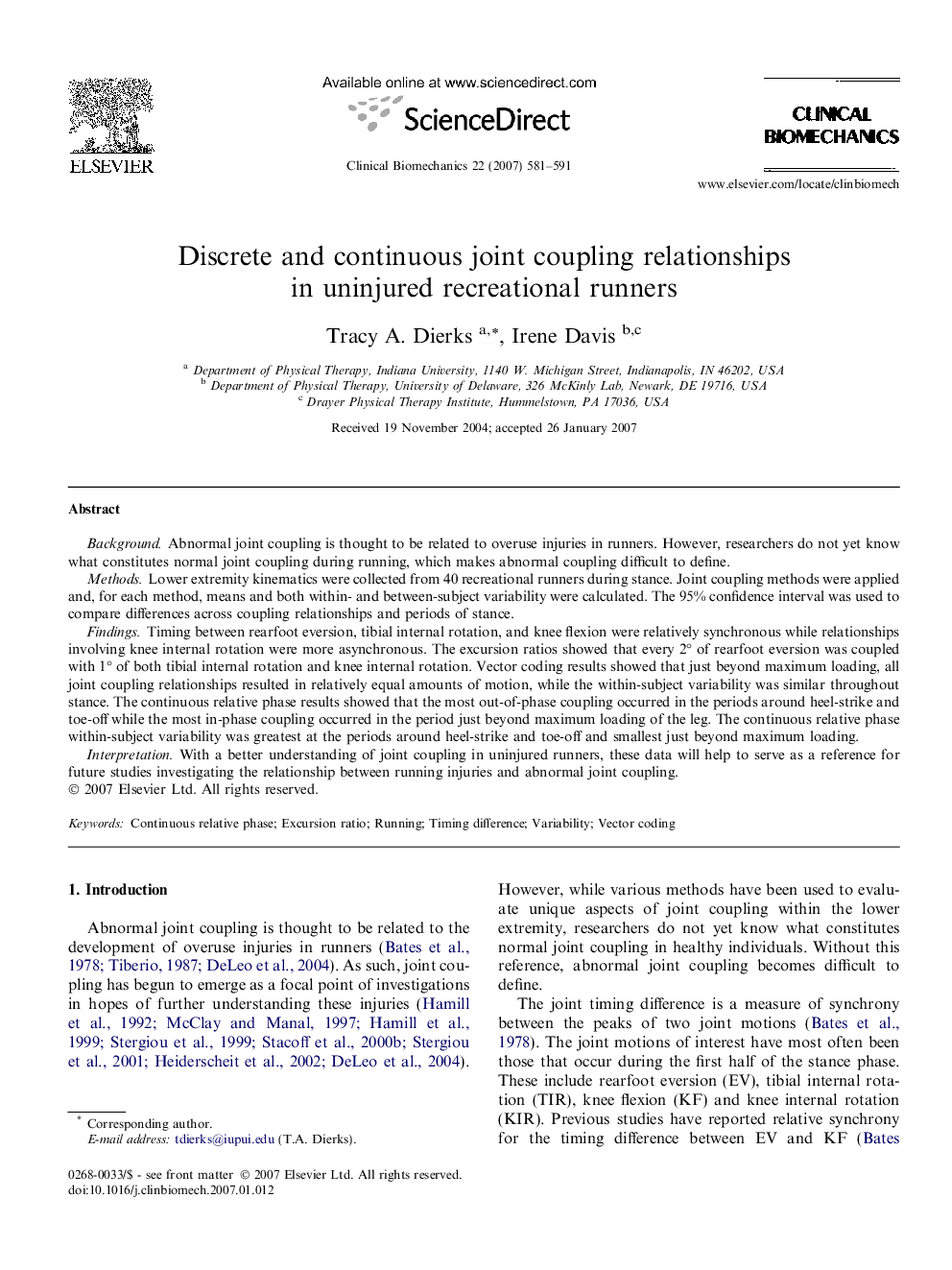| Article ID | Journal | Published Year | Pages | File Type |
|---|---|---|---|---|
| 4051372 | Clinical Biomechanics | 2007 | 11 Pages |
BackgroundAbnormal joint coupling is thought to be related to overuse injuries in runners. However, researchers do not yet know what constitutes normal joint coupling during running, which makes abnormal coupling difficult to define.MethodsLower extremity kinematics were collected from 40 recreational runners during stance. Joint coupling methods were applied and, for each method, means and both within- and between-subject variability were calculated. The 95% confidence interval was used to compare differences across coupling relationships and periods of stance.FindingsTiming between rearfoot eversion, tibial internal rotation, and knee flexion were relatively synchronous while relationships involving knee internal rotation were more asynchronous. The excursion ratios showed that every 2° of rearfoot eversion was coupled with 1° of both tibial internal rotation and knee internal rotation. Vector coding results showed that just beyond maximum loading, all joint coupling relationships resulted in relatively equal amounts of motion, while the within-subject variability was similar throughout stance. The continuous relative phase results showed that the most out-of-phase coupling occurred in the periods around heel-strike and toe-off while the most in-phase coupling occurred in the period just beyond maximum loading of the leg. The continuous relative phase within-subject variability was greatest at the periods around heel-strike and toe-off and smallest just beyond maximum loading.InterpretationWith a better understanding of joint coupling in uninjured runners, these data will help to serve as a reference for future studies investigating the relationship between running injuries and abnormal joint coupling.
